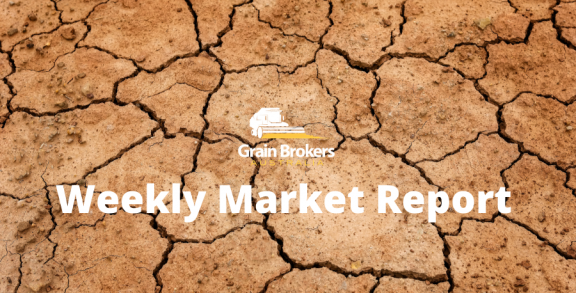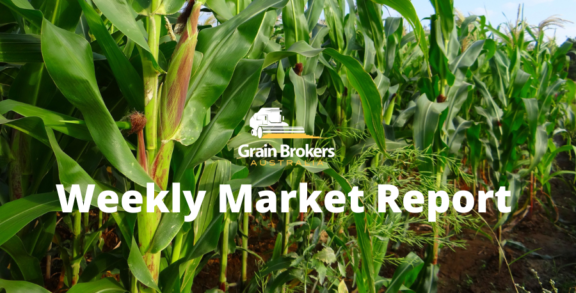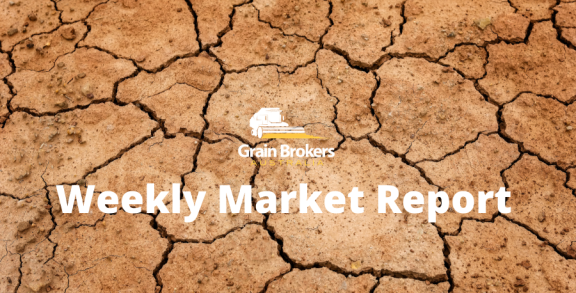
The northern hemisphere winter crop harvest is winding down, or is finished, in most countries, so production is now pretty much known and factored into the global pricing matrix. However, it is concern around 2021/22 production in the Black Sea region that appears to have put a bomb under international wheat prices last week.
US wheat futures posted substantial gains in all trading sessions except Tuesday. The Chicago December wheat contract finished the week at US$5.75 per bushel or just over US$211 per metric tonne. That is an increase of US$12 per metric tonne for the week, and the closing price marks a seven-month high for the contract.
Black Sea wheat futures have also been on the march with the December contract rallying US$4.75 on Friday to close the week at US$235.50 free on board (FOB). That close represents an increase of US$7.00 for the week and US$22.50 compared to the August 18 close.
The winter cropping regions of Ukraine, Russia and Kazakhstan are very dry and are an increasing source of concern as the next planting cycle is delayed. This raises the risk of poor crop establishment, leaving the young struggling plants susceptible to the cold when the northern hemisphere winter descends in coming months.
The ideal planting window in Russia is now open, but soil moisture levels are very low, as is the prospect of rain in the next two weeks. Farmers are desperate to plant what they can, and many paddocks have been sown dry, hoping that the rains will be forthcoming. In other regions germination of the early sown crops has been so poor that some fields will have to be reseeded when the autumn rains finally do arrive.
In Ukraine, the optimum sowing window for winter cereals is 10-30 September, but the soil moisture profile is extremely poor across most of the country. While recent rains may have been sufficient in some parts to germinate recently planted crops, it is the lack of rain for the next ten days that is the primary concern for the local farmers. This will take them into October which is traditionally the driest month of the year in Ukraine.
Nevertheless, October is not too late; it is just not ideal. The situation is no different from Australia. Anzac Day has long been considered the perfect start date for the winter cereal planting program which continues through May. If the autumn break is delayed, then farmers will plant in June, or even early July if the season dictates.
Likewise, the Black Sea farmer can plant in October, November or even early December if the drought persists. However, unlike Australia, the challenge for the Black Sea farmer is the crop needs to be in the ground and established before the cold winter months, and the snow cover arrives. If the rains do not come, the farmers will be forced to change their program and plant lower yielding spring cereals in the New Year.
The rally in wheat prices has come as 2020/21 wheat production in the northern hemisphere is on the rise again. The major exporting origins of Russia and Canada have both had significant upgrades in recent weeks. And with the prospect of record world wheat production this season the global balance sheet is not tight.
In these circumstances ample new crop wheat supply, particularly in the Black Sea region, would typically be pressuring world prices lower. Nevertheless, in 2020 it seems that the abundant nearby Russian supply is not the only factor determining prices.
Farmers across the globe are more informed in this social media era and have indeed become more discerning sellers. And low interest rates give them staying power. More importantly, the global consumer has been sitting back, expecting lower prices as the northern hemisphere harvest progressed.
But the traditional harvest pressure never eventuated. The consumer simply has less coverage than he would normally have at this time of year, and the unexpected rally caught them napping. For fear of missing the boat, they have come to the market to cover their nearby and even some mid-term requirements.
And many large buyers have been rethinking their strategies. Egypt’s General Authority For Supply Commodities (GASC) has stated that they have been instructed by the government to garner six months of wheat demand as a strategic reserve and they currently have around four months of cover.
Russia itself ran down its reserves leading into their harvest and has plans to rebuild them again this season. This means potential exports are lower than would usually be expected from an 82 million metric tonne harvest. Moscow has said its grain exports will not be subject to quotas from July to December this year, but quotas are possible from January to June next year to guarantee domestic supply.
As a result, traders and importing nations have become wary of booking too much grain out of Russia. They fear that exports may be unexpectedly restricted, or even blocked. While it would seem an overreaction at this point in the cycle, concerns around next season’s production could just be the catalyst for such action if the dry continues.
Realistically, it is far too early to be writing off the 2021/22 Black Sea crop, and there are no glaring issues in the 2020/21 global balance sheet to justify a lasting rally. But the momentum can take it further if the sellers are patient and the consumers keep stepping up to the plate. Eventually, it will run its course.
In the meantime, this presents a fantastic selling opportunity for the Australian farmer, particularly if production certainty received a boost with some much needed rain over the past week.
Call your local Grain Brokers Australia representative on 1300 946 544 to discuss your grain marketing needs.





